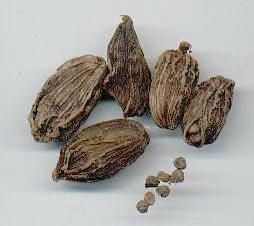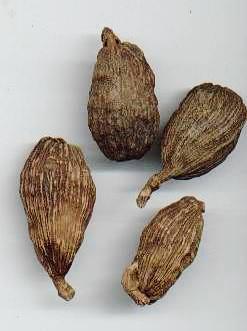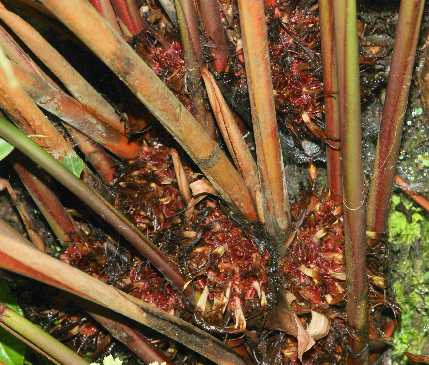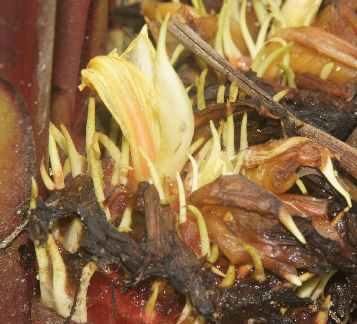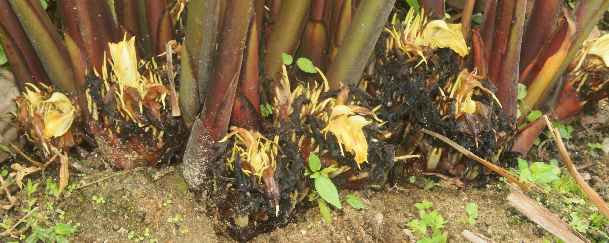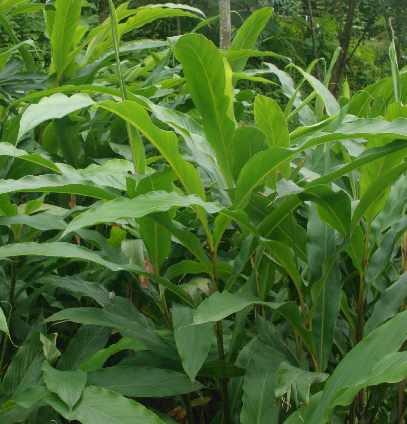
|
|
Black cardamom plants in a private garden in Nepal
|
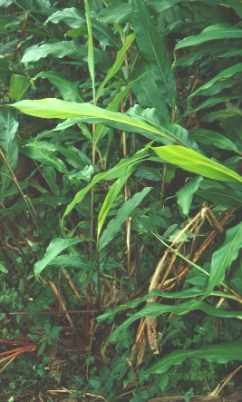
|
|
Black cardamom plants in Sikkim
|
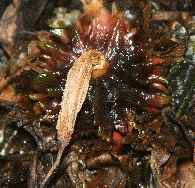
| |
Single unripe pod
|
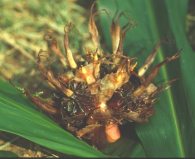
| |
Group of black cardamom pods
|
|
Black cardamom is, in most books, described as an inferior
substitute to
green cardamom, but this is simply
untrue. In India, black cardamom has its special field of application, and
although green and black cardamoms are frequently interchangeable, the black
variety is felt superior for spicy and rustic dishes, while green cardamom is
much preferred by the Imperial (Mughal) cuisine with its subtle blend of sweet
fragrances.
Black cardamom can be used in rather liberal amounts, up to a few capsules per
person. The smoky fragrance of the pure spice is not discernible in the
finished dish; black cardamom cannot dominate a dish, but enhances and
intensifies the taste of other ingredients. The pods should be slightly
crushed before usage, but not so much that the seeds are released; you may
remove them before serving (though I do not), but if you don’t, be sure to warn
your guests about dark, woody and, hmmm, intensive tasting objects in the
sauce.
Black cardamom, as other spices used in Northern India, needs some time to
develop its aroma best. This behaviour is shared by other unground spices, like
cinnamon, cloves and green cardamom, all of which are popular in Northern
India and mostly used unground (see also onion).
Thus, it is generally a good idea to prepare Northern Indian dishes of
braising type (kormas) a few hours or even one day in
advance.
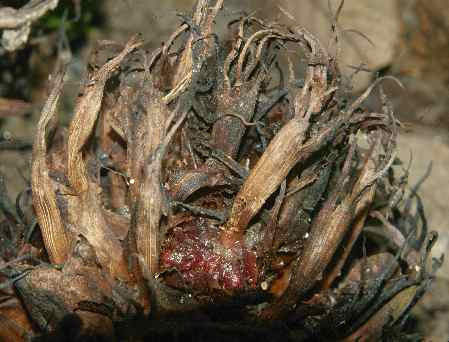
|
|
The dried flower remains attached to each pod in the cluster
|
Although there are many distinct species of black cardamom, ranging in pod size
from 2 cm (A. subulatum, Nepal to North Vietnam) to more than
5 cm (A. tsao-ko, China), their tastes do not differ much,
although only the Nepal variety is smoked.
Apart from usage in Indian (and Nepali) cuisine, they are not much known, but
have some regional importance in Central and Southern China. There, the ground
seeds are an optional ingredient to the five spice powder (see star anise).

|
|
The dried flower remains attached to each pod in the cluster
|
In the mountains of Sichuan province in central China, black cardamom is
commonly employed in long-simmered meet stews together with other dried
spices. Slowly simmered foods, particularly of beef, are rather typical
for Sichuan cookery (see Sichuan pepper for
an example) and are less frequently found in other Chinese cooking styles.
The term xiang liao [香料] fragrant grains
refers to such mixtures of dried spices which are prepared differently for
each recipe. Typical components of xiang liao are
cassia, Sichuan pepper,
black cardamom, star anise and
lesser galangale; less commonly, Sichuan
cooks employ greater galangale,
cloves, nutmeg and
licorice.
See also cassia on another Chinese cooking technique
that uses dried spices, namely master sauce.



